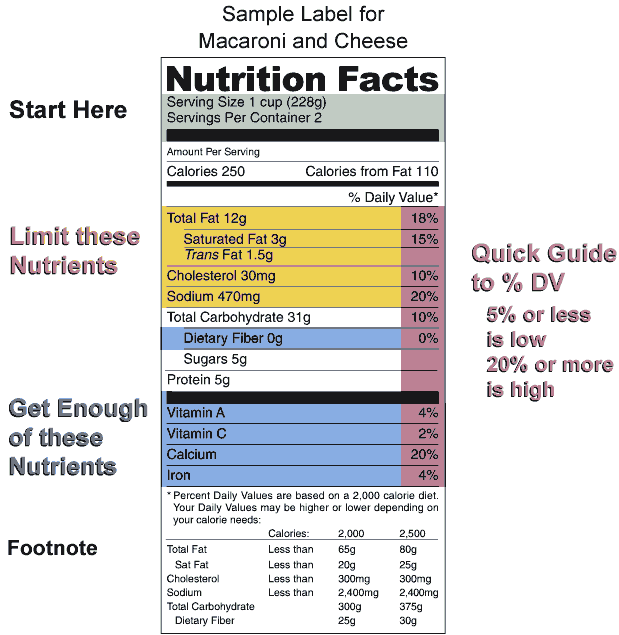
Should we label products for water, land, and environmental facts? Image: wikimedia
Look at the fine print. Many items on grocery store shelves commonly have labels revealing the amount of carbs, sodium, or sugar in the product. Is it time to label information about environmental, land, and water use? For example, dairy milk, one glass per day for a year, requires 7,000 square feet (650 sq. m) of land – that’s the same size as two tennis courts. That year’s worth of dairy milk also requires water use: 2,588 gallons (9,800 liters) of water – that’s the same amount as 150 bathing showers, each lasting a luxurious eight minutes. Switch to almond milk? It requires less water to produce than dairy, or soy, milk; but soy generates more greenhouse gases than almond.

Rome’s Trevi Fountain. Image: wikimedia.
There’s precedent for labeling environmental water sources. One of the features of water from the Roman Aqueducts was the taste and freshness of each particular spring flowing from the surrounding hills. Water surveyors used methods such as studying the health and complexions of village folk, determining water quality by such evidence. In the urbs, labeled and name-branded waters competed for consumer preference. Even today, there is a cafe in Rome advertising cappuccino made from the sweet, fresh waters of the Aqua Virgo.
The global food supply chain generates 13.7 billion metric tons of carbon dioxide, or 26% of human-caused greenhouse gas emissions, according to Poore and Nemecek. Agriculture covers 43% of arable land; 2/3rds of the freshwater withdrawals are for irrigation. The United Nations illustration, above, indicates systemic factors regarding water, energy, and food. Wonder what you’re consuming – in food and natural resources? Even if governments don’t require such labeling, could industry groups initiate the trend? The beverage and brewing industry recently agreed to display nutrition information on beer products, but most is in small-type or hidden at the bottom of a six-pack. Coors, Corona, Guinness, and Heineken complied, and now Bud Light will display more visible listings of the amounts of barely, hops, rice – and water. According to VP of Marketing for Bud Light, Andy Goeler, younger consumers want to know and are “really in tune to ingredients.”
Here’s a link to an environmental calculator for some commonly consumed foods.
Guibourg, Clara and Helen Briggs. Calculator design by Print Shah, development by Felix Stephenson and Becky Rush. “Climate change: Which are the best vegan milks?” 8 January 2019. BBC.com. https://www.bbc.com/news/science-environment-46654042/
Poore, Joseph and T. Nemecek. “Reducing food’s environmental impacts through producers and consumers.” 1 June 2018. Science. doi: 10.1126/science.aaq0216.http://science.sciencemag.org/content/sci/360/6392/987.full.pdf?ijkey=ffyeW1F0oSl6k&keytype=ref&siteid=sci
Spang, Edward J. “Food-Energy-Water Nexus.” 4 May 2017. IE GAC Presentation. https://ie.ucdavis.edu/wp-content/uploads/sites/38/2017/05/Spang-03May17.pdf.
Spang, Edward J., William Moomaw, Kelly Sims Gallagher, Paul Kirshen, David H. Marks. “The water consumption of energy products: An international comparison.” October 2014. Environmental Research Letters. 9 (10): 105002 https://www.researchgate.net/publication/266620784_The_water_consumption_of_energy_production_An_international_comparison
Building the World Blog by Kathleen Lusk Brooke and Zoe G Quinn is licensed under a Creative Commons Attribution-NonCommercial-NoDerivs 3.0 Unported Lice


